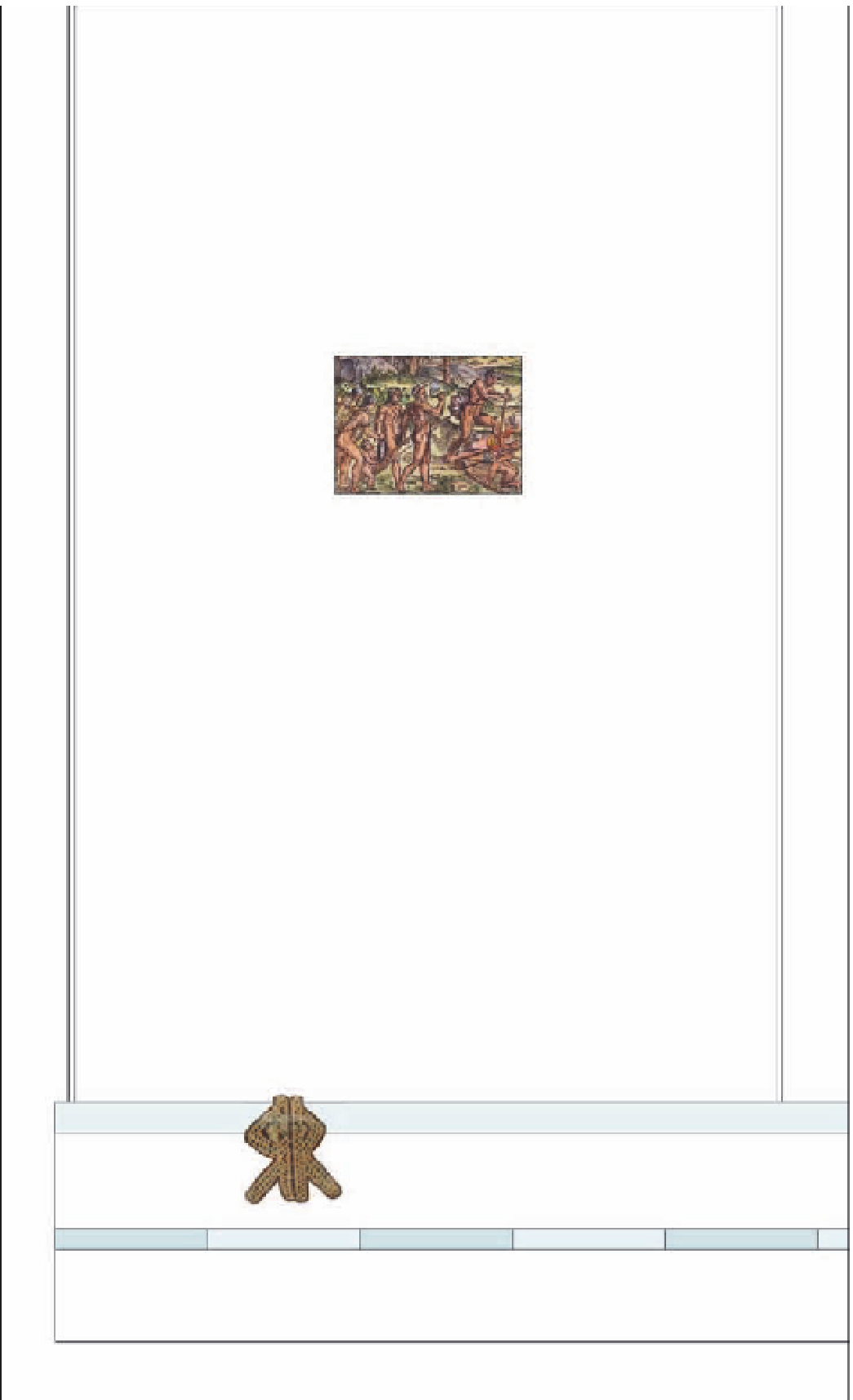Travel Reference
In-Depth Information
THE HISTORY OF BRAZIL
Very little is known about the history of Brazil before 1500,
when Europeans first traveled there. Archaeological
remains, which consist mainly of pottery, suggest a complex
society that was in existence long before the colonialists arrived.
After more than 300 years of Portuguese colonization, Brazil
became a republic in 1889. Long periods of totalitarian rule
finally led to the return of democracy in 1989.
For over a millennium,
before the Europeans
arrived in Brazil, Amazônia
had a vast network of
sophisticated societies
with populations of up to
100,000. The abundance
of fish in the Amazon
river and its tributaries
was almost certainly one of the main
reasons for the wealth and rapid
growth of cultures in Amazônia.
Up until the beginning of the 16th
century, the middle Amazon region
around Santarém was an important
center for ceramic art and trading.
It was home to thousands of semi-
settled indigenous people who grew
maize and had access to plentiful
fish. Living on higher land, up above
the flood plain, as well as in long
houses along river banks, they left
important ceramic remains.
Archaeological evidence from the
earth mounds near Santarém and
also on the Ilha de Marajó
(see p270)
suggests that some of the shell
midden mounds were part of
these complex fishing societies.
The most widespread of the 1,000
semi-nomadic indigenous peoples
that inhabited the territory at the
time of the European
conquest, were the Tupi-
Guaraní Indians. While
they lived off slash-and-
burn farming, the
Tupinambá, another large
group, cultivated crops,
primarily maize.
Early European depiction of
the Tupinambá people
EUROPEAN DISCOVERY
The coastline was widely inhabited
when Spanish explorer Vicente
Yáñez Pinzón disembarked on the
northeastern shore in Pernambuco,
on January 26, 1500. He could not
claim the newfound land for Spain,
as he was officially limited by the
Tordesillas meridian. The Treaty of
Tordesillas, signed in 1494 between
Spain and Portugal, determined that
all lands discovered west of a merid-
ian located 3 miles (5 km) west of
the Cape Verde Islands would belong
to Spain, and those to the east of this
line could be claimed by Portugal.
On April 23, 1500, Pedro Álvares
Cabral landed in southern Bahia,
marking the Portuguese arrival in
Brazil. Portugal, which already control-
led the Indian Ocean and the spice
trade, bolstered its position as a mer-
cantile power rivaled only by Spain.
TIMELINE
Detail of rock painting, dating from 2800 BC
13000 BC
One of the
early hunting com-
munities flourishes
near Pedra Furada,
in Piauí state
1000 BC-AD 1000
Amazônian
civilization, currently referred to
as Patiti or Enin by archaeologists,
develops a crop irrigation system
AD 1000
Hierarchical
societies settled
along the
Amazon
AD 1
AD 1000
20000 BC
2000 BC
1000 BC
9500 BC
Migration
across the Pacific
Ocean to mid-
Amazon region
3000 BC
Prehistoric
cultural developments
in Marajoara and
Santarém have been
dated to this time
AD 500-1300
Period of major
growth and expansion of
Marajoara culture
AD 1500
Pedro
Cabral of Portugal
lands in Bahia
Detail of a meeting of Portuguese sailors and natives of Brazil, a 1592 line engraving by Theodor de Bry








































